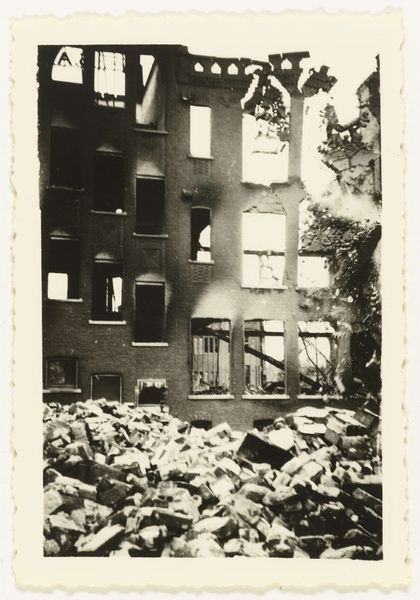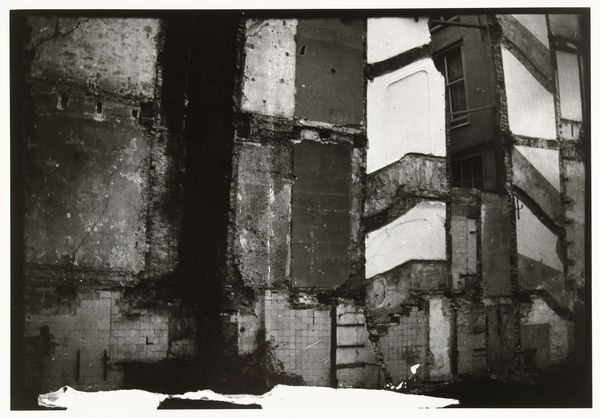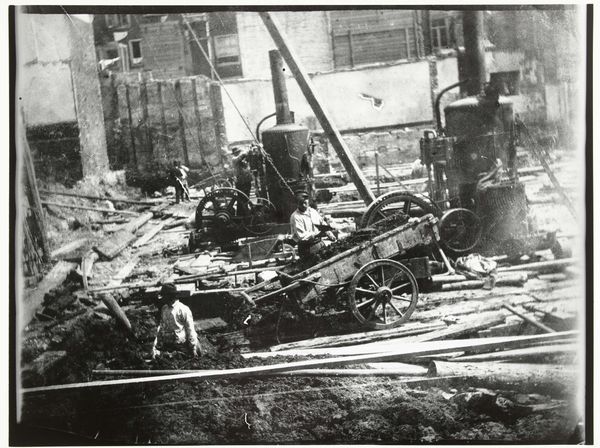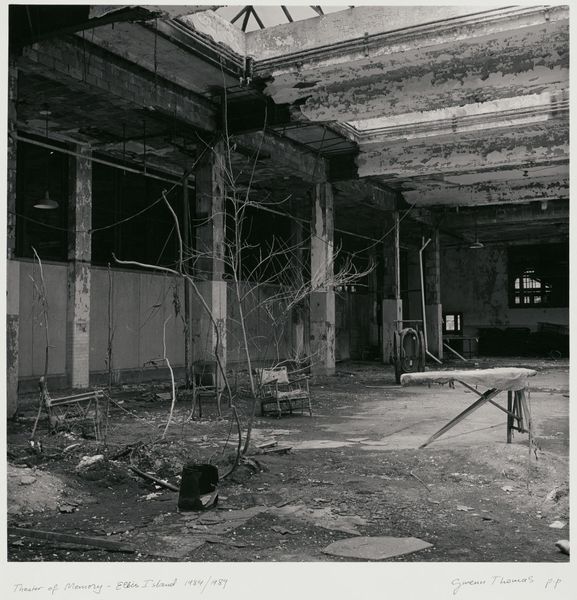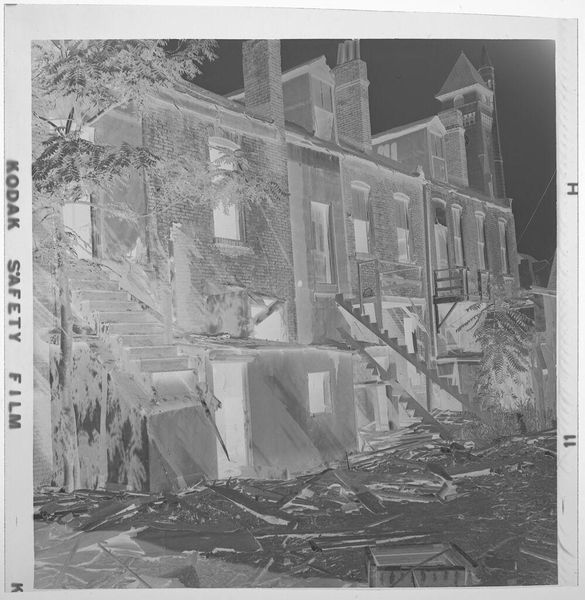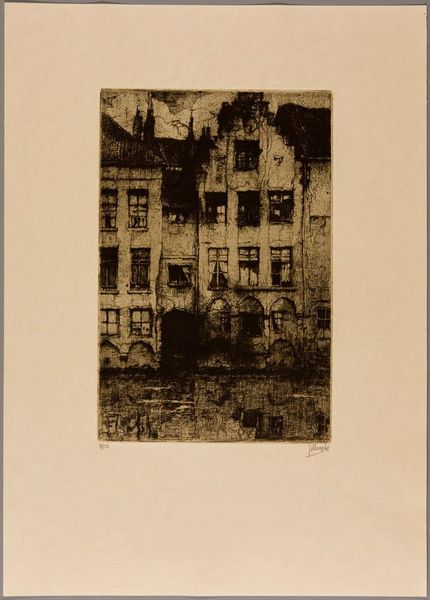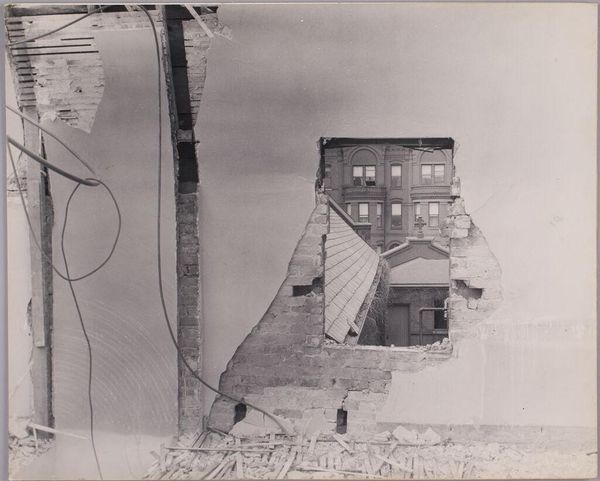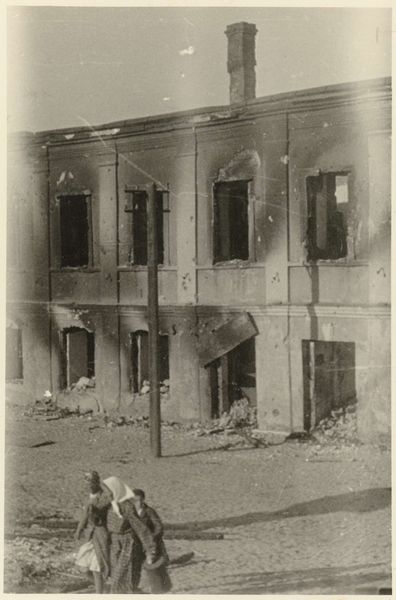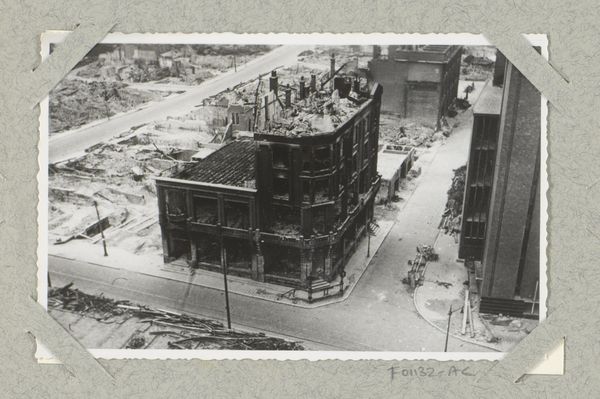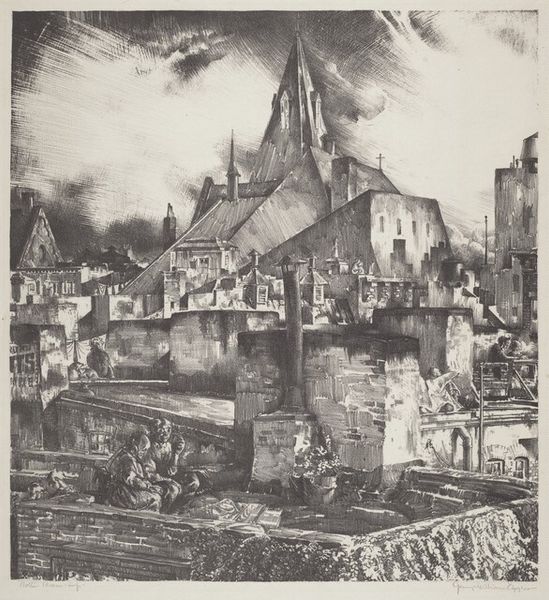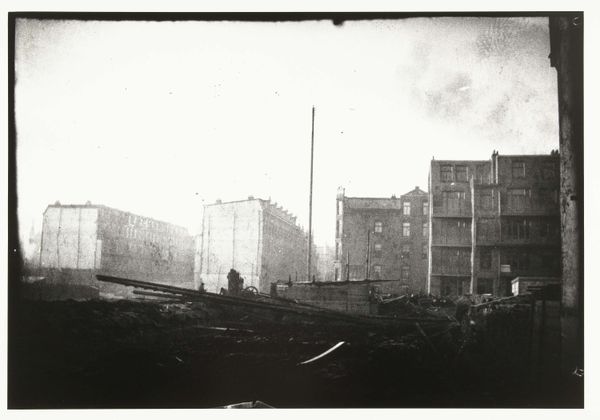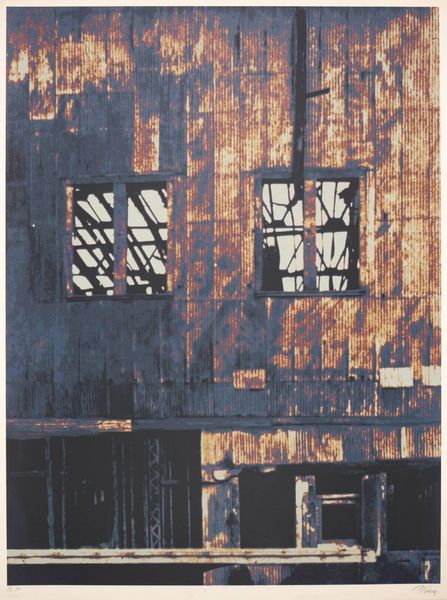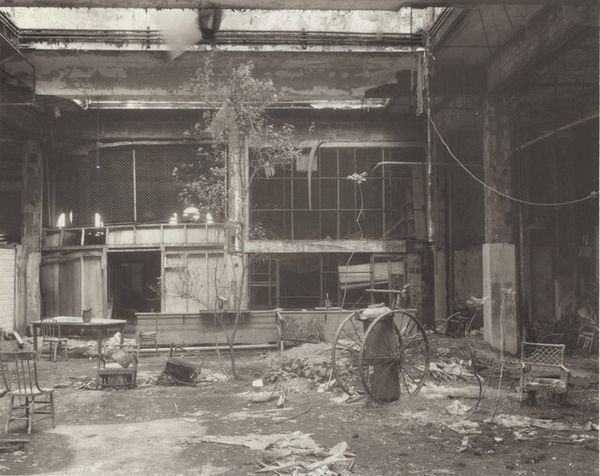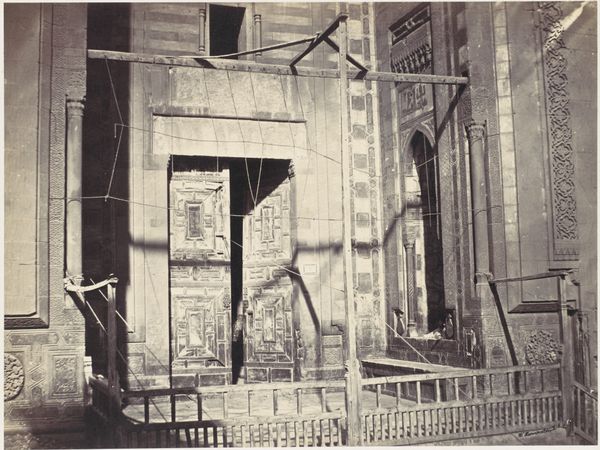
Dimensions: height 400 mm, width 275 mm, height 505 mm, width 405 mm
Copyright: Rijks Museum: Open Domain
Curator: Let’s take a look at this evocative photograph, "Afbraak in een Amsterdamse straat," or "Demolition in an Amsterdam Street," captured by George Hendrik Breitner likely between 1890 and 1910. It's a gelatin-silver print, currently residing here at the Rijksmuseum. Editor: My initial thought is stark. The scene feels raw, almost like a ruin left by some cataclysmic event, and very immediate. The texture of the crumbling walls jumps right out at me. Curator: Breitner, of course, was a keen observer of Amsterdam’s urban life during a period of intense change. This image encapsulates a moment in the city's evolution. One might ask, what were the social forces at play that necessitated such demolition and rebuilding? Editor: Absolutely, and you can practically smell the dust and debris, can't you? Looking closely, one sees the way the buildings are constructed—or deconstructed. You get a real sense of the labor involved. Brick by brick, layer by layer, dismantled. What became of these materials? Were they recycled, reused? That's what intrigues me. Curator: Consider the perspective too. Breitner often placed himself right in the thick of things, capturing a democratic viewpoint that challenged traditional, idealized cityscape depictions. It's social realism playing out in pictorial form. The viewer is placed squarely within the environment. Editor: Indeed. And it isn't just about bricks and mortar. There’s timber propping up unsteady facades. Metal rods strewn amongst rubble. The variety of materials—and their precariousness— speaks volumes about the physical realities of urban development. Did these labourers feel any emotional connection to this process, I wonder? Curator: The photograph presents an intriguing historical artifact too. We see not only the literal deconstruction, but can use this image to understand societal development and see into the effects that those times imposed on local areas and society. It forces one to consider who benefited from these urban renewal projects, and whose stories were erased in the process. Editor: I agree. Ultimately, viewing Breitner's print provides a powerful record, both immediate and textural, of the continuous cycle of urban change, where both the built environment and its inhabitants are subjected to powerful social and material forces. Curator: Indeed. This work reminds us that even in destruction, there’s a process, a history, and a narrative worth uncovering.
Comments
No comments
Be the first to comment and join the conversation on the ultimate creative platform.
